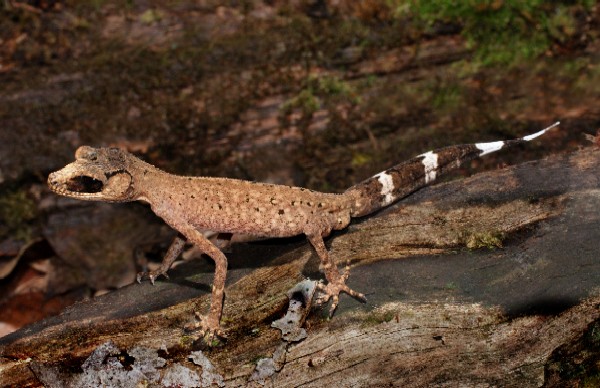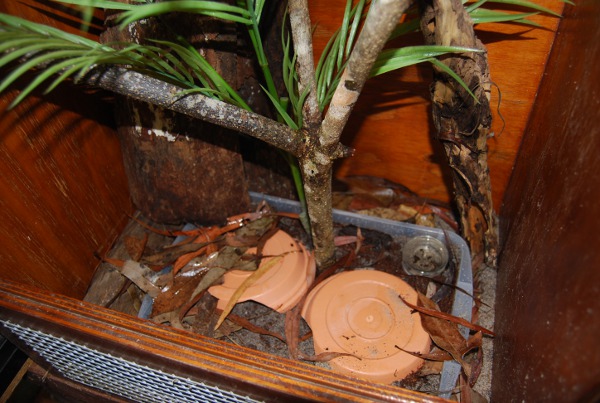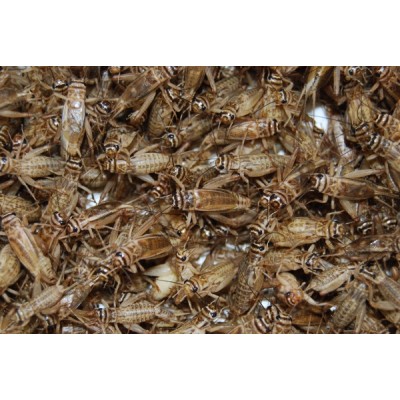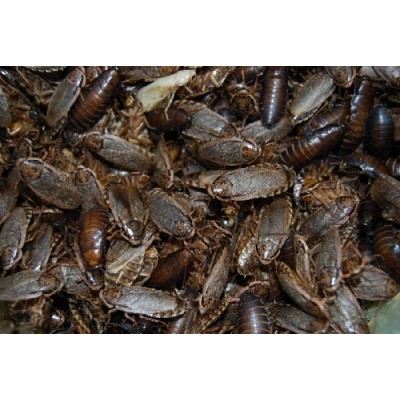Chameleon Gecko (Caresheet)

CAPTIVE HUSBANDRY
The Chameleon Gecko (Carphodactylus laevis) is still rare in captivity and has only recently become available to hobbyists. Wild specimens are shy nervous creatures but captive bred stock have proved to be relatively straightforward in the captive maintenance. There has been much speculation as to their suitability in captivity but over the years the species has proved to be quite hardy and adaptable and extremely productive. They do have certain requirements for their captive environment but then so does every reptile and if those conditions are not provided the well-being of the animal will be affected. Temperature and humidity are the key to long-term successful maintenance but they are not as susceptible to extremes as some people think unless these persist over a long period. My lizards regularly experience temperatures in the low 30's over summer but as long as the humidity is maintained and these temperatures don't continue for days on end the lizards seem to take it in their stride. Basically if you can keep leaf-tailed geckos (Saltuarius sp.) and/or Boyd's Forest Dragons (Hypsilurus boydii), you can keep chameleon geckos. The cage needs to be vertically orientated and quite spacious to ensure multiple inhabitants can get away from each other. Dimensions of 500x400x700mm high would be suitable for a pair. A water retentive substrate such as coco peat or a coco peat/fine sand mix should be used and covered in a layer of leaf litter. Provide areas on the ground for shelter such as pieces of bark, hollow logs or upturned pot saucers with an entry notch cut in one side. Install some climbing branches fitted vertically from top to bottom using pieces that are between 20-50mm in diameter. It is a good idea to add a shallow container of substrate that is kept permanently moist and cover part of this with some shelter for the geckos to crawl beneath. This will also act as an egg-laying site for the female. Live plants may be added as they will help maintain the humidity in the enclosure which is essential for the health of chameleon geckos. The enclosure should be sprayed liberally between 2-5 times a week depending on the time of year and the prevailing temperatures, so more often during hot dry weather. An automatic misting system would be ideal for these geckos as it can be programmed to switch on for short periods of time as often as you like to ensure that level of humidity is maintained. Insufficient humidity will manifest itself in skin shedding problems especially around the toes and head. A water dish should be present at all times. During the warmer months chameleon geckos have strong appetites and will consume 3-5 large crickets or woodies every 2-3 days. Having said this they always look quite slim and only the gravid females take on a robust appearance. The males in particular always look skinny and emaciated but this is their natural body characteristic and, as long as the vertebrae or pelvic bones are not protruding, these animals are perfectly healthy.
CAPTIVE BREEDING
Despite their rather fragile appearance, settled captive chameleon geckos are very easy to breed and surprisingly productive. Mating usually begins in early spring with the first eggs usually laid in September/early October. Gravid females are usually quite obvious because of the species' slender compressed body shape and the clutches of two eggs are laid in moist substrate only some 10-20mm beneath the surface. Healthy, well-fed females will produce 4-6 clutches a year without any observable loss of condition. The eggs are very prone to dehydration so must be kept moist at all times. My preferred incubation medium is moist sphagnum moss with most of the water squeezed out. Two shallow depressions are made in the surface of the moss to accommodate the eggs and the container is sealed and incubated at relatively low temperatures of 24-26°C. The eggs take between 90-120 days to hatch at this temperature range. Hatchlings should be housed either separately or in twos in small containers with plenty of hiding places and a constantly high humidity. They will begin eating 3-4mm crickets after about a week and will grow quite rapidly under ideal conditions, although they won't reach sexual maturity until they are at least two years old, probably at least three years for the females.

INSIDE OF CHAMELEON GECKO BREEDING ENCLOSURE SHOWING PLASTIC CONTAINER FOR EGG-LAYING
- All images property of Gunther Schmida & Rob Porter
OpenCart Maintenance
© Copyright 2001-2025 Livefoods Unlimited - All Rights Reserved
Tel: 0400464505 - livefoods@outlook.com - A.B.N 37 960 709 736


